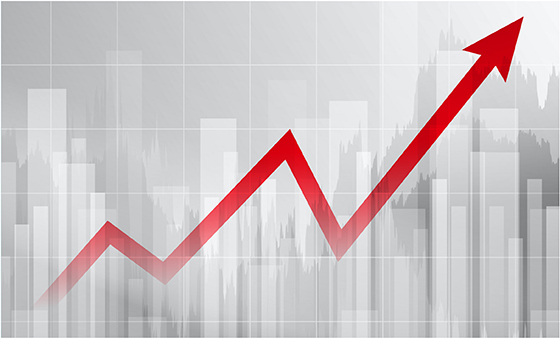Unraveling the Significance of Journal Ranking: Methods of Evaluation and Their Importance in Academic Publishing
In the realm of academic publishing, where the dissemination of knowledge and the advancement of scholarly discourse are paramount, the concept of journal ranking holds considerable significance. Journal ranking serves as a tool for assessing the relative quality, impact, and prestige of academic publications within their respective fields. It aids researchers, institutions, funding agencies, and other stakeholders in making informed decisions about where to publish, how to allocate resources, and how to evaluate scholarly output. This article delves into the intricacies of journal ranking, exploring its importance and various methods of evaluation.
Understanding Journal Ranking:
Journal ranking refers to the process of systematically evaluating and categorizing academic journals based on predefined criteria. These criteria typically include factors such as citation impact, editorial quality, peer review process, publication frequency, international reach, and disciplinary relevance. Journal rankings aim to provide researchers with guidance on the relative standing of journals within their fields, helping them identify reputable outlets for disseminating their research findings.
Importance of Journal Ranking:
- Quality Assessment:
Journal ranking serves as a proxy for assessing the quality and credibility of academic publications. Researchers often rely on journal rankings to determine the prestige and influence of potential publication venues, aiming to publish in high-ranking journals to enhance the visibility and impact of their work.
- Career Advancement:
For academics, publication in high-ranking journals can significantly impact career advancement prospects. Tenure decisions, promotion considerations, and grant funding allocations often take into account an individual’s publication record, with a particular emphasis on publications in journals with high rankings.
- Funding Allocation:
Funding agencies and institutions use journal rankings as a criterion for allocating research funding. Projects published in high-ranking journals are perceived as more influential and valuable, thus receiving preferential treatment in funding decisions.
- Institutional Reputation:
Universities and research institutions frequently use journal rankings as a component in evaluating their research output and academic performance. Higher rankings contribute to higher institutional prestige, enhancing the reputation and competitiveness of academic institutions.
- Research Visibility:
Journals with higher rankings tend to attract more readership and citations, thereby increasing the visibility and dissemination of published research. Researchers aspire to publish in journals with greater reach to ensure their findings reach a wider audience and have a greater impact on their field.
Methods of Evaluation:
- Citation-Based Metrics:
Impact Factor: Calculated by dividing the total number of citations received by articles published in a journal over a specific time period by the total number of articles published during the same period.
Eigenfactor Score: Similar to impact factor but considers the prestige of the citing journals.
CiteScore: Provides a broader citation window (three years) and includes all document types in the calculation.
- Expert Opinion Surveys:
Journal Citation Reports (JCR): Conducts annual surveys of subject experts to assess journal quality and significance, generating journal impact factor rankings.
Scopus Journal Metrics: Utilizes expert opinion surveys and citation data to evaluate journal quality and generate rankings.
- Editorial and Peer Review:
Quality of Peer Review: Evaluates the rigor and thoroughness of the peer review process, including the expertise of reviewers, fairness of assessments, and transparency of editorial decisions.
Editorial Policies: Considers factors such as editorial independence, ethical standards, publication ethics, and adherence to best practices in scholarly publishing.
- Altmetrics:
Online Engagement: Measures the online visibility and engagement of research outputs across various platforms, including social media, news articles, blogs, and policy documents.
Downloads and Views: Tracks the number of downloads, views, and shares of published articles to assess their impact and reach beyond traditional citation metrics.
Challenges and Controversies:
While journal ranking provides valuable insights into the quality and influence of academic publications, it is not without its challenges and controversies:
- Field Bias:
Different academic disciplines exhibit varying citation practices and publishing norms, leading to inherent biases in journal rankings that favor certain fields over others.
- Journal Manipulation:
Some publishers engage in manipulative tactics to artificially boost their rankings, such as coercive citation, excessive self-citation, or editorial bias.
- Lack of Transparency:
The criteria and methodologies used in journal ranking systems are often opaque and subject to interpretation, making it difficult to assess the validity and reliability of rankings.
- Overreliance on Metrics:
Relying solely on quantitative metrics for journal ranking may overlook qualitative aspects of scholarly publishing, such as editorial quality, methodological rigor, and societal impact.
- Evolving Publishing Landscape:
The emergence of open-access publishing, preprint servers, and alternative publishing models challenges traditional notions of journal ranking and necessitates ongoing reassessment of evaluation methods.
Conclusion:
Journal ranking plays a pivotal role in the scholarly publishing ecosystem, providing researchers, institutions, and funding agencies with valuable insights into the quality, impact, and prestige of academic publications. By employing a combination of citation-based metrics, expert opinion surveys, editorial and peer review assessments, and altmetrics, stakeholders can gain a more comprehensive understanding of journal quality. However, it is essential to recognize the limitations and biases inherent in journal ranking systems and to complement quantitative metrics with qualitative assessments of scholarly impact. Ultimately, the goal is to foster a culture of excellence, integrity, and innovation in academic publishing, ensuring that the dissemination of knowledge continues to serve the betterment of society.
Editing More than 200,000 Words a Day
Send us Your Manuscript to Further Your Publication.








Is ChatGPT Trustworthy? | Rovedar | Scoop.it says:
ChatGPT vs. Human Editor | Rovedar | Scoop.it says:
Enhancing Your Assignments with ChatGPT | Roved... says: